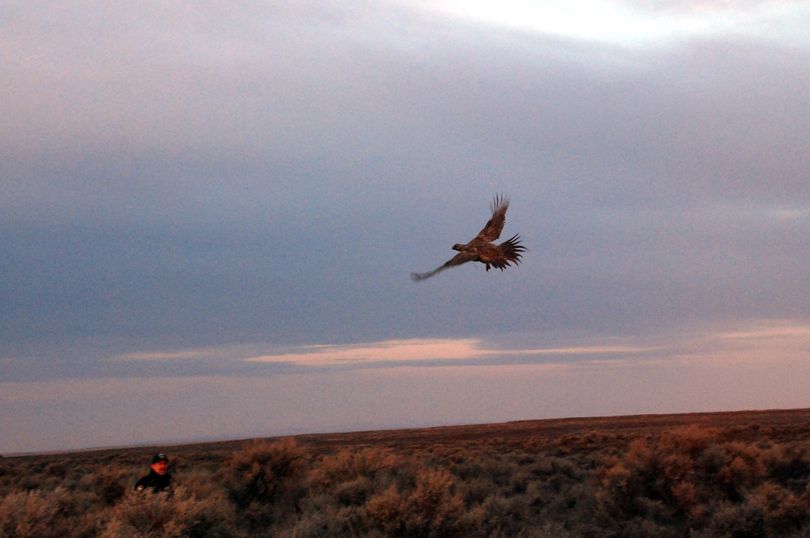Prairie grouse releases continue in Eastern Washington

UPLAND BIRDS -- Sage grouse and sharp-tailed grouse have been released at the Swanson Lakes Wildlife Area in Washington's Lincoln County this spring, continuing years of efforts to restore the once plentiful prairie grouse.
Read on for details.
Washington Department of Fish and Wildlife say the relocation efforts are meant to boost low populations of two bird species native to eastern Washington’s shrub-steppe habitat.
Greater sage grouse and Columbian sharp-tailed grouse, both listed by the state for protection as threatened species, were relocated to WDFW’s Swanson Lakes Wildlife Area in Lincoln County. Each relocated grouse is equipped with radio-telemetry that enables biologists to monitor their survival and movements.
Thirty-seven sage grouse captured from healthy populations near Vale, Ore., were released on the wildlife area in late March. It was the fifth such release since 2008 on the state wildlife area and adjacent U.S. Bureau of Land Management (BLM) shrub-steppe habitat south of Creston.
Twenty sharp-tailed grouse captured from healthy populations near Burley, Idaho,werereleased on another part of the wildlife area in late April. It was the seventh such release since 2005.
WDFW Wildlife Biologist Mike Atamian of Spokane reported that some of the released male sage grouse almost immediately joined other resident males on a lek, a group mating dance ground where males vie to breed with females.
“We capture and relocate both these shrub-steppe species at this time of year to take advantage of their focus on mating,” Atamian said. “It increases the chance of them adapting to their new home.”
Sage grouse are the largest native grouse, at nearly two-feet long and about four pounds in weight. Sharp-tailed grouse are roughly half that size. Both species historically numbered in the tens of thousands and ranged throughout eastern Washington shrub-steppe and Palouse grasslands.
Grouse range and numbers have been greatly reduced by removal of native vegetation and other disturbances, leaving only remnant populations of sharp-tailed grouse in Douglas, Lincoln and Okanogan counties and sage grouse primarily in Yakima and Douglas counties. Both species were listed by the state as threatened in 1998 and have been federal species of concern since 2001.
The state population of sage grouse is estimated to be just under 1,200 birds; sharp-tailed grouse are estimated at just over 800 birds. WDFW recovery plans call for restoring habitat and continuing relocation efforts until populations of about 3,200 birds of each species can be sustained.
Cooperators in Washington grouse recovery include the BLM, the Oregon Department Fish and Wildlife, the Idaho Department of Fish and Game, Washington State University, Colville Confederated Tribes, and multiple volunteers. Relocation and monitoring efforts are funded by federal grants through BLM and the U.S. Fish and Wildlife Service.
